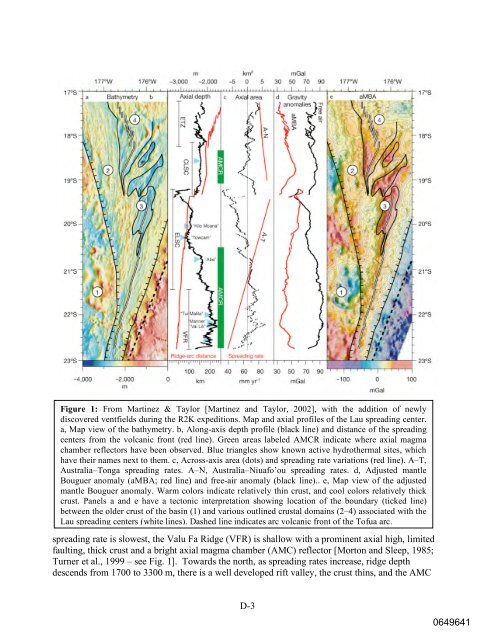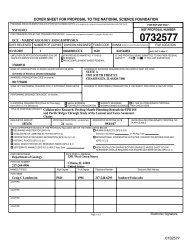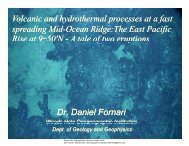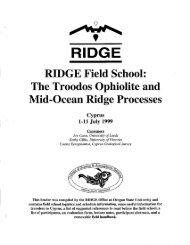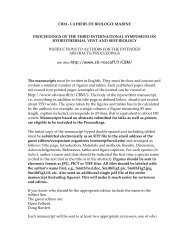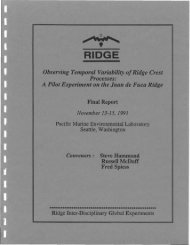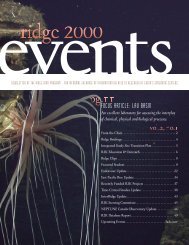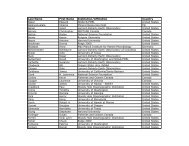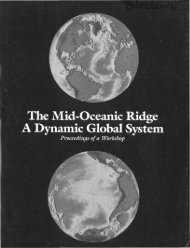NSF Forms - Ridge 2000 Program
NSF Forms - Ridge 2000 Program
NSF Forms - Ridge 2000 Program
Create successful ePaper yourself
Turn your PDF publications into a flip-book with our unique Google optimized e-Paper software.
Figure 1: From Martinez & Taylor [Martinez and Taylor, 2002], with the addition of newly<br />
discovered ventfields during the R2K expeditions. Map and axial profiles of the Lau spreading center.<br />
a, Map view of the bathymetry. b, Along-axis depth profile (black line) and distance of the spreading<br />
centers from the volcanic front (red line). Green areas labeled AMCR indicate where axial magma<br />
chamber reflectors have been observed. Blue triangles show known active hydrothermal sites, which<br />
have their names next to them. c, Across-axis area (dots) and spreading rate variations (red line). A–T,<br />
Australia–Tonga spreading rates. A–N, Australia–Niuafo’ou spreading rates. d, Adjusted mantle<br />
Bouguer anomaly (aMBA; red line) and free-air anomaly (black line).. e, Map view of the adjusted<br />
mantle Bouguer anomaly. Warm colors indicate relatively thin crust, and cool colors relatively thick<br />
crust. Panels a and e have a tectonic interpretation showing location of the boundary (ticked line)<br />
between the older crust of the basin (1) and various outlined crustal domains (2–4) associated with the<br />
Lau spreading centers (white lines). Dashed line indicates arc volcanic front of the Tofua arc.<br />
spreading rate is slowest, the Valu Fa <strong>Ridge</strong> (VFR) is shallow with a prominent axial high, limited<br />
faulting, thick crust and a bright axial magma chamber (AMC) reflector [Morton and Sleep, 1985;<br />
Turner et al., 1999 – see Fig. 1]. Towards the north, as spreading rates increase, ridge depth<br />
descends from 1700 to 3300 m, there is a well developed rift valley, the crust thins, and the AMC<br />
D-3<br />
0649641


